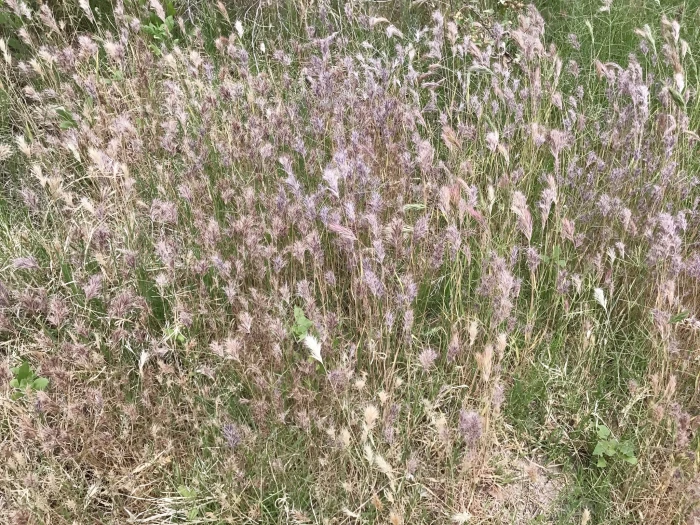Compact Brome
(Bromus madritensis)
Compact Brome (Bromus madritensis)
/
/

CK Kelly
CC BY 4.0
Image By:
CK Kelly
Recorded By:
Copyright:
CC BY 4.0
Copyright Notice:
Photo by: CK Kelly | License Type: CC BY 4.0 | License URL: http://creativecommons.org/licenses/by/4.0/ | Rights Holder: CK Kelly | Publisher: iNaturalist | Date Created: 2017-05-07T18:53:45Z |



























Estimated Native Range
Climate Requirements for Fort Worth, Texas
| This Plant | Your Site | Plant Suitability for Your Location | ||
|---|---|---|---|---|
| • Precipitation | 2" - 85" | 33" | Your precipitation may be too high for this plant. | Too high |
| • High Temp. | 60°F - 116°F | 97°F | Your summer temperatures are normal for this plant. | Excellent |
| • Low Temp. | 2°F - 59°F | 33°F | Your winter temperatures are normal for this plant | Excellent |
This plant may not grow well at your location - your precipitation is too high.
Summary
Bromus madritensis, commonly known as compact brome, is a winter annual grass native to the Mediterranean region, including southern and western Europe, and has been introduced and naturalized in many other parts of the world. It typically grows to a height of 8-28 inches (20-70 cm) and features downy or slightly hairy leaf sheaths. The plant has a tufted growth habit and produces slender, nodding flower spikes that are not particularly showy.
Compact brome is valued for its ability to thrive in disturbed soils and is often used for erosion control and soil stabilization. It is also utilized as a cover crop in agricultural settings due to its rapid growth and ability to suppress weeds. However, its cultivation should be approached with caution as it can become invasive outside its native range, outcompeting native vegetation and altering ecosystems. In gardens, it requires minimal care, growing well in full sun to part shade and in a wide range of soil types, provided they are well-drained. It is drought-tolerant once established, making it suitable for xeriscaping.CC BY-SA 4.0
Compact brome is valued for its ability to thrive in disturbed soils and is often used for erosion control and soil stabilization. It is also utilized as a cover crop in agricultural settings due to its rapid growth and ability to suppress weeds. However, its cultivation should be approached with caution as it can become invasive outside its native range, outcompeting native vegetation and altering ecosystems. In gardens, it requires minimal care, growing well in full sun to part shade and in a wide range of soil types, provided they are well-drained. It is drought-tolerant once established, making it suitable for xeriscaping.CC BY-SA 4.0
Plant Description
- Plant Type: Grass
- Height: 1-3 feet
- Width: 1-2 feet
- Growth Rate: Moderate
- Flower Color: N/A
- Flowering Season: Spring
- Leaf Retention:
Growth Requirements
- Sun: Full Sun, Part Shade
- Water: Low, Medium
- Drainage: Medium, Fast
Common Uses
Erosion Control, Low Maintenance
Natural Habitat
Native to the Mediterranean region including southern and western Europe
Other Names
Common Names: Madrid Brome, Spanish Brome, Lesser Brome
Scientific Names: Bromus madritensis, Anisantha madritensis, Anisantha madritensis subsp. madritensis, Anisantha madritensis subsp. tefedetica, Anisantha madritensis var. ciliata, Bromus arenaceus, Bromus asperrimus, Bromus darderi, Bromus dardori
GBIF Accepted Name: Bromus madritensis